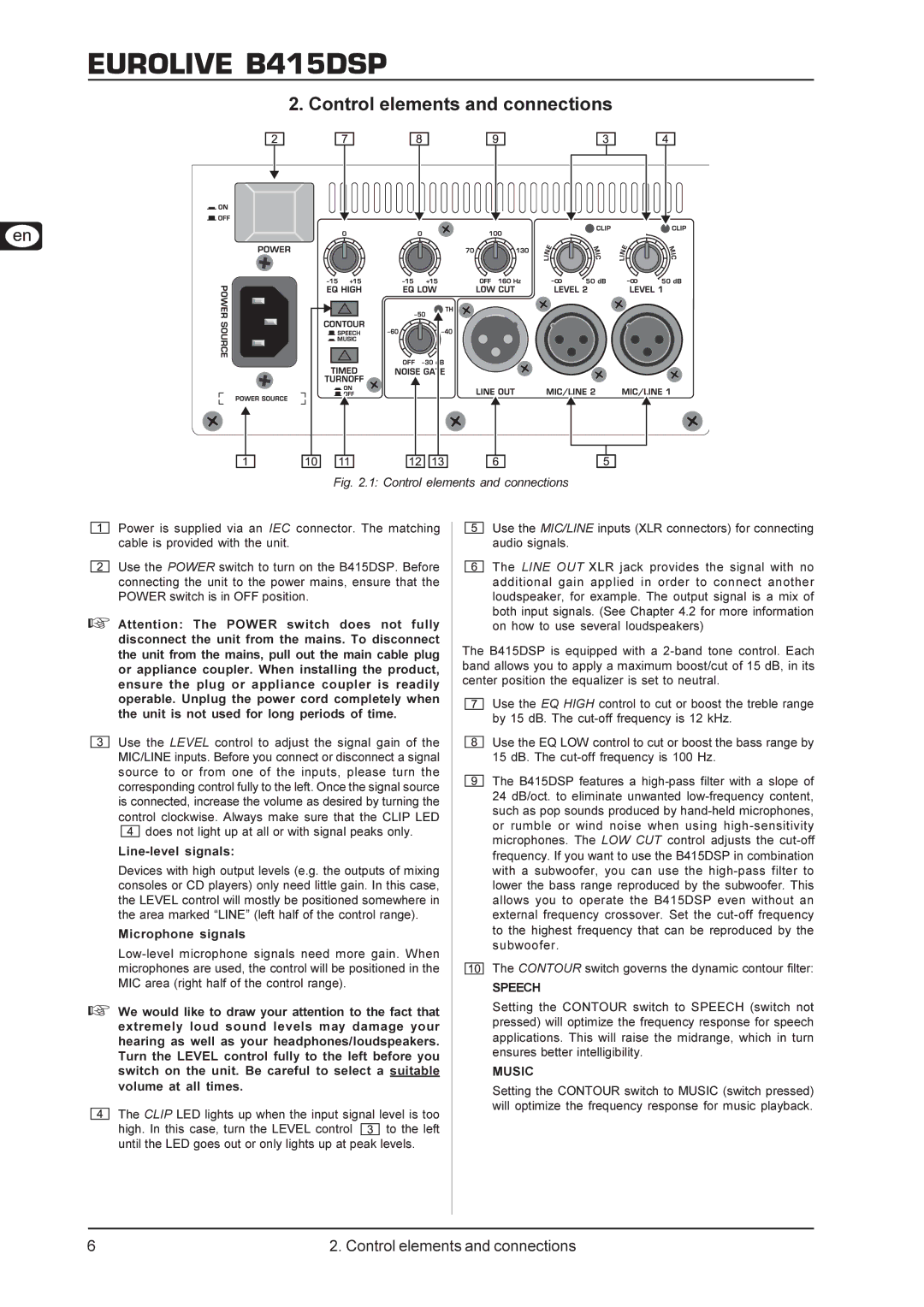
EUROLIVE B415DSP
2. Control elements and connections
Fig. 2.1: Control elements and connections
Power is supplied via an IEC connector. The matching cable is provided with the unit.
Use the POWER switch to turn on the B415DSP. Before connecting the unit to the power mains, ensure that the POWER switch is in OFF position.
+Attention: The POWER switch does not fully disconnect the unit from the mains. To disconnect the unit from the mains, pull out the main cable plug or appliance coupler. When installing the product, ensure the plug or appliance coupler is readily operable. Unplug the power cord completely when the unit is not used for long periods of time.
Use the LEVEL control to adjust the signal gain of the MIC/LINE inputs. Before you connect or disconnect a signal source to or from one of the inputs, please turn the corresponding control fully to the left. Once the signal source is connected, increase the volume as desired by turning the control clockwise. Always make sure that the CLIP LED ![]() does not light up at all or with signal peaks only.
does not light up at all or with signal peaks only.
Line-level signals:
Devices with high output levels (e.g. the outputs of mixing consoles or CD players) only need little gain. In this case, the LEVEL control will mostly be positioned somewhere in the area marked “LINE” (left half of the control range).
Microphone signals
+We would like to draw your attention to the fact that extremely loud sound levels may damage your hearing as well as your headphones/loudspeakers. Turn the LEVEL control fully to the left before you switch on the unit. Be careful to select a suitable volume at all times.
The CLIP LED lights up when the input signal level is too
high. In this case, turn the LEVEL control ![]() to the left until the LED goes out or only lights up at peak levels.
to the left until the LED goes out or only lights up at peak levels.
Use the MIC/LINE inputs (XLR connectors) for connecting audio signals.
The LINE OUT XLR jack provides the signal with no additional gain applied in order to connect another loudspeaker, for example. The output signal is a mix of both input signals. (See Chapter 4.2 for more information on how to use several loudspeakers)
The B415DSP is equipped with a
Use the EQ HIGH control to cut or boost the treble range by 15 dB. The
Use the EQ LOW control to cut or boost the bass range by 15 dB. The
The B415DSP features a
24dB/oct. to eliminate unwanted
The CONTOUR switch governs the dynamic contour filter:
SPEECH
Setting the CONTOUR switch to SPEECH (switch not pressed) will optimize the frequency response for speech applications. This will raise the midrange, which in turn ensures better intelligibility.
MUSIC
Setting the CONTOUR switch to MUSIC (switch pressed) will optimize the frequency response for music playback.
6 | 2. Control elements and connections |
